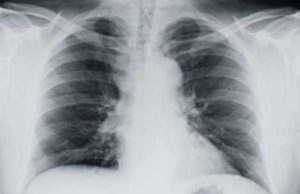
What is Navelbine?
Navelbine is an anti-mitotic chemotherapy drug that is administered as a treatment for certain types of cancer, including non-small cell lung cancers and breast cancer. Navelbine is the trade name given to Vinorelbine, which is the first 5’ NOR semit-synthetic vinca alkaloid. Navelbine is attained through semi-synthesis from alkaloids extracted from the rosy periwinkle.
Navelbine was invested by renowned pharmacist Pierre Potier. The drug was derived from CNRS in France during the late 1980s and was formally licensed to the oncology department of the Pierre Gabre Organization. Navelbine was first approved in France in 1989 for the treatment of non-small cell lung cancers. Navelbine then earned approval to treat breast cancer in 1991. Navelbine received formal approval from the United States Food and Drug Administration during the winter of 1994. The Pierre Fabre organization now markets Navelbine in the United States where the chemotherapy drug went generic in the winter of 2003.
Navelbine: Common Side Effects
Navelbine has a multitude of side effects that ultimately limits its use. The most common side effect attached to Navelbine is a lowered resistance to infection, bleeding, bruising, constipation, explosive diarrhea, general feelings of fatigue and/or weakness, inflammation of the vein which the drug was injected, tingling of the hands and/or feet and headaches. Less common side effects associated with Navelbine use include: allergic reaction and hair loss.
How Does Navelbine Fight Mesothelioma Cancer:
Navelbine is one of the newest chemotherapy drugs available on the market today. Navelbine is derived from a group of drugs referred to as plant alkaloids; these drugs are applied to stop cancer cells from multiplying or separating into multiple new cells. Navelbine may be administered in tandem with other chemotherapy drugs to combat mesothelioma cancer.
Clinical trials for Navelbine have shown that roughly one quarter of all mesothelioma cancer patients–who applied the drug to their mesothelioma treatment plan—exhibited positive responses. This statistic is approximately 5% higher than the success rates for the bulk of chemotherapy drugs. In some instances, the patient’s mesothelioma cancer stabilized for several months.
Navelbine, as a mesothelioma inhibitor, is injected through the patient’s vein or via a central line. Navelbine may be also administered via a capsule. If your medical professional has chosen the capsule form, the drug must be taken with a full glass of water and you must stringently adhere to the schedule created by your doctor for your chemotherapy plan. Your doctor will determine the suitable dosage levels as well as the frequency of the Navelbine mesothelioma treatments. Navelbine dosage is dependent on your body weight, size, overall health and the stage of your cancer.
Dissimilar to the majority of mesothelioma chemotherapy drugs, Navelbine does not work by altering the patient’s DNA structure. Instead, Navelbine interferes with the cancer’s cell division.
During the cancer’s cell division process (referred to as mitosis), the cell’s DNA is replicated so that there are two identical sets of chromosomes, which are constructed with a series of micro tubes. These tools are utilized to attach themselves to the chromosomes; the micro tubes pull one copy to one side of the dividing cell and the other to the opposite side. The micro tubes are constructed by long chains of a distinct type of proteins referred to as tubulins. When administered, Navelbine binds itself to the tubulins to stop the microtubules from being formed. Without the application of functional microtubules, the call will not divide and eventually die.
While Navelbine possesses a lower toxicity than most chemotherapy drugs, this particular mesothelioma drug still exhibits certain problems, including a reduction in the number of red blood cells and platelets. Navelbine may also cause granulocytopenia, which is regarded as a severe decrease in the number of white blood cells needed to fight infection. A doctor will typically recommend a patient to have white cell blood counts in the 1,000’s before Navelbine is administered. Dosage is subsequently adjusted depending on the blood counts measured on each treatment day. Pregnant women should avoid taking Navelbine because it is known to cause birth defects.
What is Mesothelioma?
Mesothelioma is a rare cancer that formulates from the alteration of cells in the mesothelium–a two-layered membrane that environs the lungs, abdomen and chest cavity. Mesothelioma is observed in three forms; each type is directly linked to prolonged asbestos exposure. Because of this relationship with the dangerous filament, individuals with a protracted history of asbestos exposure are at risk of developing the deadly disease.
When asbestos fibers are inhaled, the dust adheres to the mesothelium. These carcinogens foster tumors which are susceptible to proliferation. The destruction of protective tissues gives way to mitosis to remote areas in the body, including several vital organs. At this stage in the cancer’s life, malignant mesothelioma is regarded as inoperable.
When undisturbed, asbestos does not pose a risk to humans; however, when asbestos is contacted, carcinogenic dust is released into the atmosphere, thus becoming susceptible to inhalation. When asbestos dust is inhaled, the probability of developing mesothelioma significantly increases.
The wide majority of mesothelioma cases may be observed in the abdomen cavity or the lungs. Common symptoms include: pleural effusion (build-up of fluids in the pleural cavity), painful swallowing, night sweats, chest pains, bowel obstruction, difficulty breathing, unexpected weight loss, and a painful cough.
Mesothelioma is difficult to diagnose during the disease’s earliest stages. Complications associated with mesothelioma diagnosis derive from the cancer’s slow-developing nature and fairly routine cellular structure. Mesothelioma symptoms will not present themselves until 25-50 years following the patient’s preliminary exposure to the deadly mineral.
Treatment for mesothelioma cancer is largely based on the stage (progression) of the cancer at the time of diagnosis. Mesothelioma stages represent the degree of the cancer’s proliferation; in its last stage (4th stage), mesothelioma has already spread to several organs beyond the point of origin.
Because a delay in diagnosis, malignant mesothelioma prognosis is often bleak; the average survival time is 4 to 18 months.
Mesothelioma may be detected in the following forms: pleural, peritoneum and pericardial. Pleural—the most common form of the cancer–attacks the pleural cavity, which is the thin layer of lubricating cells located between the chest cavity and lungs; Pericardium mesothelioma develops in the layer of tissues that protect the lungs; and peritoneum mesothelioma terminates the protective membranes surrounding the abdomen (the peritoneum).
As stated above, treatment for mesothelioma cancers are elastic to the stage that the disease was diagnosed in. Details concerning mesothelioma stages are as follows:
Stage I Mesothelioma: During the first stage of the cancer, mesothelioma features a localized tumor located in the lining of the lungs, the diaphragm or the sac surrounding the heart. Securing a diagnosis at this stage is exceptionally rare. Those lucky enough to receive a 1st stage diagnosis may be ruled eligible for curative mesothelioma surgeries. These operations will attempt to extract cancerous tumors from the body.
Stage II Mesothelioma: In its second stage, the mesothelioma cancer spreads past the point of origin. The tumor may spread to the lymph nodes or chest wall. Although curative treatment methods may be undertaken for stage II mesothelioma patients, life expectancy is greatly decreased in this stage.
Stage III Mesothelioma: Tangible symptoms are noticed in this stage. The presence of symptoms makes diagnosis most common in stage III. Stage III mesothelioma cancer features proliferation to the lining of the peritoneum, the mediastinum, the heart or to the chest wall and/or diaphragm. Stage III mesothelioma sufferers face a vicious prognosis. This limited life expectancy warrants only palliative treatment options. Stage III mesothelioma cancer is not curable at this stage. Palliative treatment methods may be applied to boost the patient’s quality of life by mitigating the associated symptoms.
Stage IV Mesothelioma: In its last stage, mesothelioma cancer features widespread proliferation to remote locations of the body. Because of this spreading, Stage IV mesothelioma is inoperable. Symptoms associated with stage IV mesothelioma are extremely painful. Similar to the cancer’s previous stage, only palliative treatment options may be applied to the sufferer. Median life expectancy for a mesothelioma stage IV mesothelioma patient is only 4 to 18 months.
If you or someone close to you has experienced a prolonged history of asbestos exposure, you must immediately schedule an appointment with a licensed medical professional. A physical examination and various imaging tests are necessary to observe your protective tissues and pleural space in the hopes of securing an early mesothelioma diagnosis. A doctor, after observing your history with asbestos, will request imaging tests, such as a CT scan, MRI and/or chest X-ray (the chest x-ray is often administered before the other imaging tests). If this pick-up on any irregularities, the doctor will suggest a biopsy; this evaluation extracts infected cells to affirm or rule-out a mesothelioma diagnosis.
Even if you do not notice any symptoms, seeking medical attention is a necessary precaution if you have a prolonged history of asbestos exposure. Early diagnosis is essential to mesothelioma treatment; although the cancer’s life expectancy is grim, your life may be prolonged or even saved if you secure early detection or an early diagnosis.





























